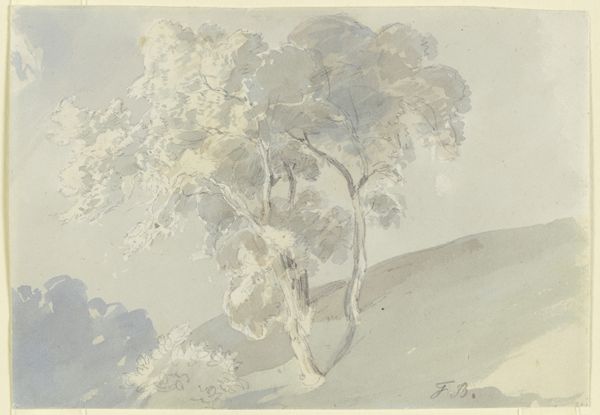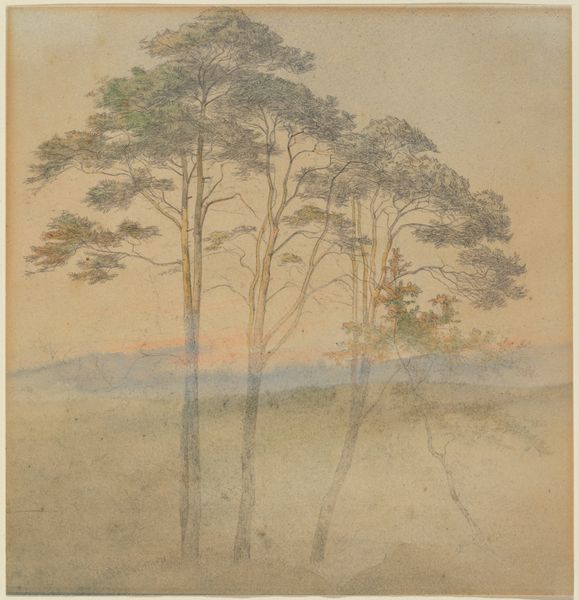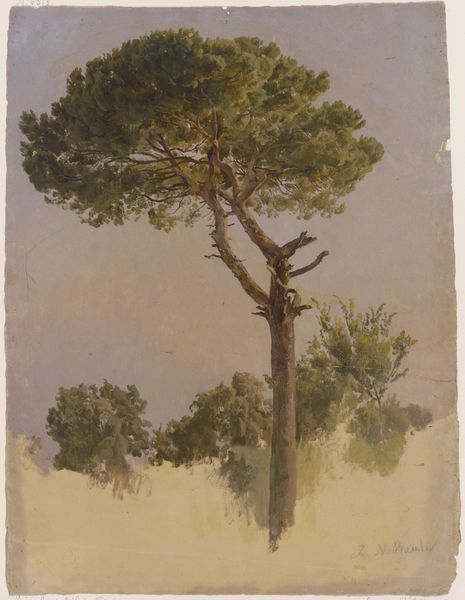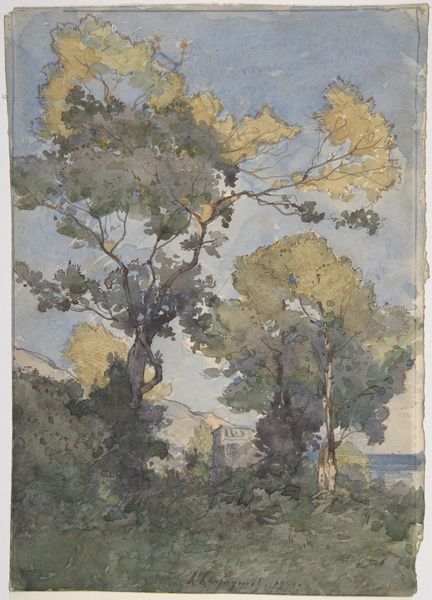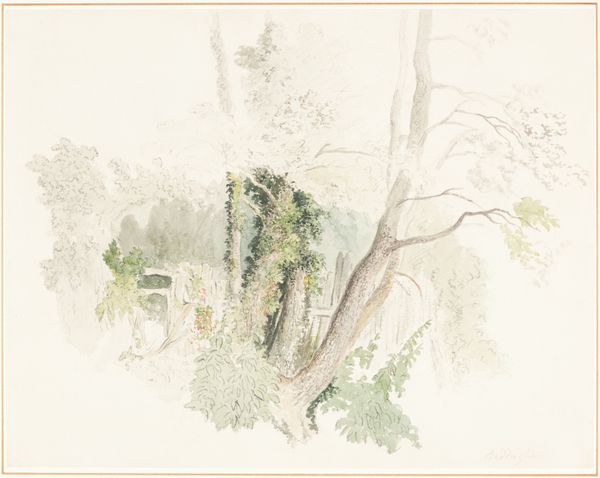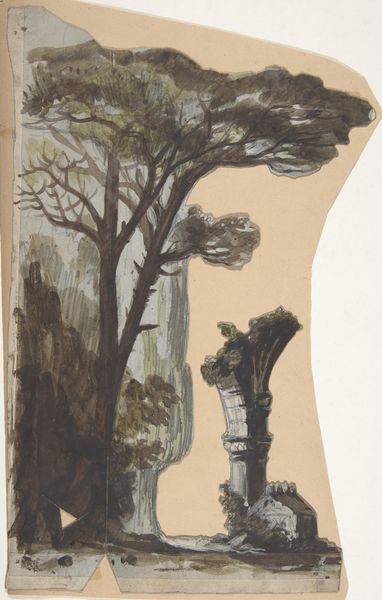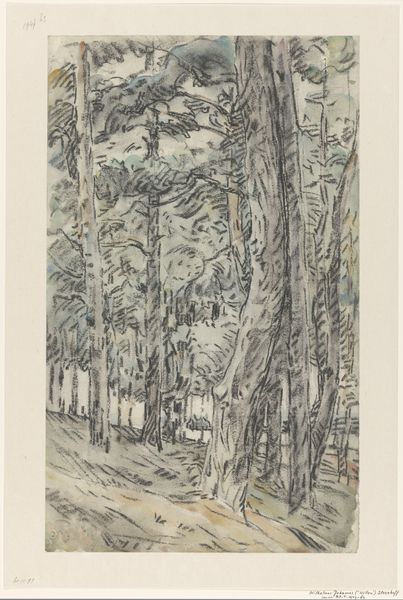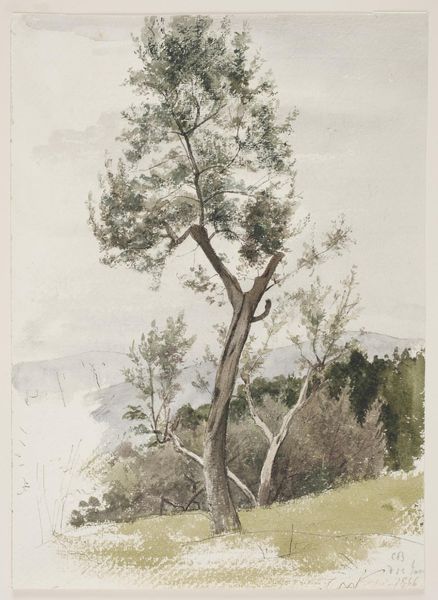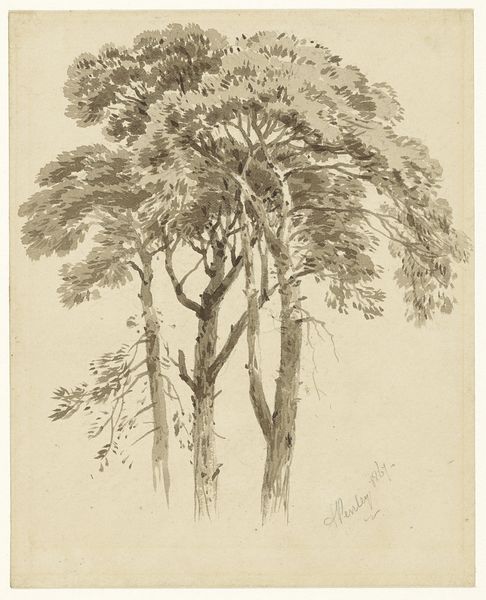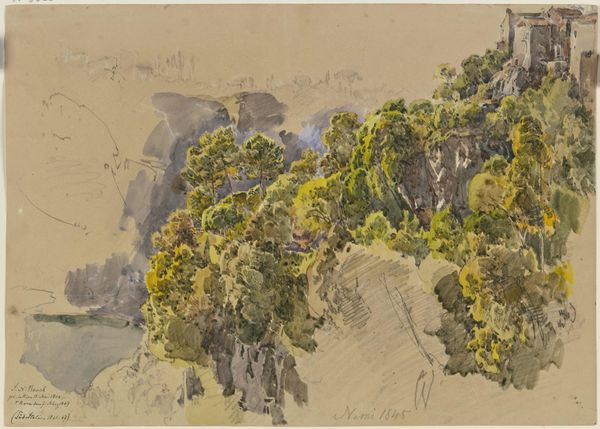
drawing, plein-air, paper, watercolor
#
drawing
#
plein-air
#
landscape
#
paper
#
watercolor
#
romanticism
#
watercolor
Copyright: Public Domain
Curator: Johann Nepomuk Rauch’s “Pinien oberhalb der Grotte von Posilipo," created in 1841, is an enchanting landscape study rendered in watercolor on paper. It’s part of the Städel Museum collection. Editor: The watercolor exudes a quietude; there's something incredibly delicate and airy about its composition, despite the density of the pines. Curator: Rauch, working in the Romantic tradition, employs the plein-air technique, which situates this artwork in an interesting socio-historical context. Artists were breaking away from studio constraints to directly engage with nature and its associated social dimensions. How does that inform your perspective? Editor: It highlights the labor involved, doesn't it? Hauling materials, facing the elements, and capturing a specific moment in time. It wasn't just about aesthetics; it was about experiencing and recording the real, raw conditions, and the impact on material reality itself. Curator: Absolutely, this aligns with Romanticism's fascination with the sublime power of nature but within the context of accessibility and democratic ideals—landscape became more relatable, intertwined with social and political reforms of the time. It's hard not to view it through a contemporary lens. Editor: You’re right. Looking closely, the application of the watercolour brings nature's forms alive, almost as if its consumption gives shape to its organic reality. The textures emerge via the paper. It creates an ethereal effect! Curator: Which perhaps speaks to the limitations—and opportunities—that female artists of the time faced in accessing training, resources, or recognition, using accessible, everyday materials. Editor: The simplicity of this approach creates access! The materiality itself becomes part of the political statement. What a contrast to traditional hierarchical constraints! Curator: Viewing it this way reveals connections to the period's burgeoning artistic freedoms. A landscape made free through plein air and democratic availability! Editor: Absolutely, and the way the materiality intersects with labor is so telling; it forces us to acknowledge the artistic labour that can be otherwise easily dismissed. I love that! Curator: A fantastic perspective. This has shifted how I experience not only this drawing but how our experience is always interlinked in this cultural moment we find ourselves in. Editor: Agreed; examining materiality highlights overlooked social structures; it’s so valuable to emphasize these connections to labor as material, artistic and personal expressions.
Comments
No comments
Be the first to comment and join the conversation on the ultimate creative platform.
